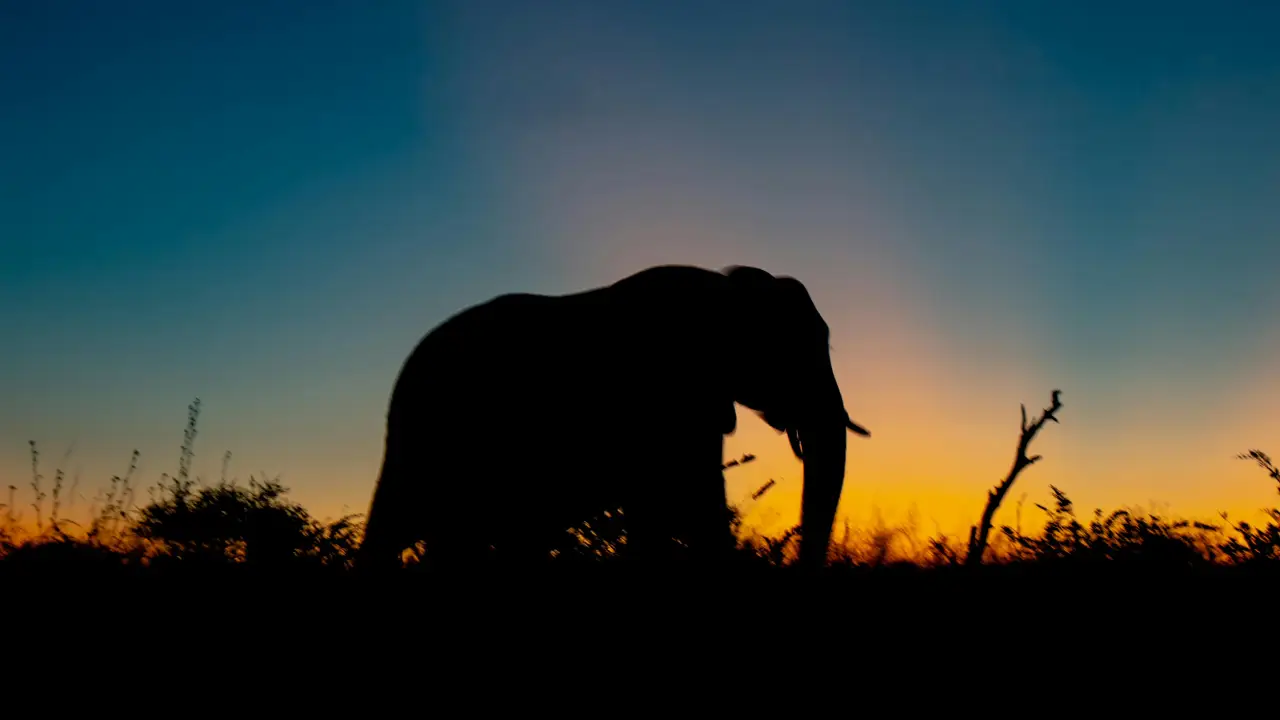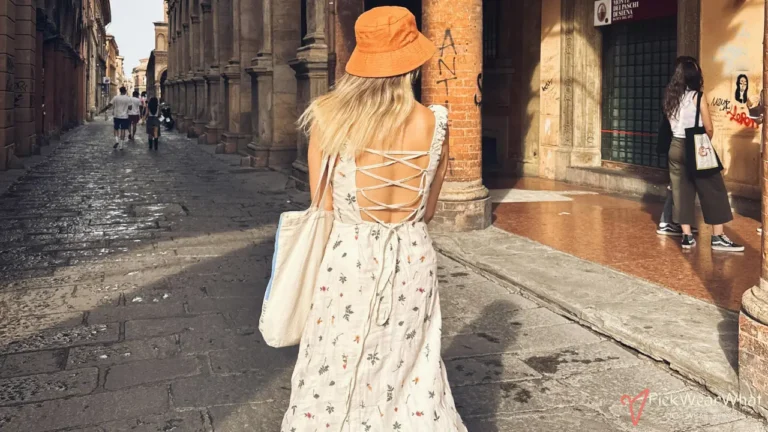When embarking on a safari in South Africa, wear comfortable, breathable clothing in neutral tones like khaki or olive to blend into the environment. Long-sleeved shirts and trousers protect against the sun and insects. A wide-brimmed hat and sunglasses are essential for sun protection, and sturdy, comfortable walking shoes or boots are recommended.
Layering is key due to temperature fluctuations between mornings and evenings. Pack a lightweight waterproof jacket and a warm layer like a fleece or sweater for cooler times. Accessories such as binoculars, a camera, and sunscreen are also advisable.
General Safari Clothing Tips for South Africa
- Neutral Colors: Opt for shades like khaki, beige, olive, or brown. These colors blend with the bush, avoiding attraction from insects and minimizing disturbance to animals.
- Lightweight, Breathable Fabrics: The African heat can be intense, so go for moisture-wicking and breathable materials, especially in summer.
- Layering: South African weather can change quickly. Early mornings and evenings may be chilly, but afternoons are warm, so layers are essential.
- Sun Protection: Bring a wide-brimmed hat, sunglasses, and long-sleeved shirts for protection against the harsh African sun.
- Insect Repellent: To ward off mosquitoes and other bugs, especially during the wet summer season.
- Comfortable Footwear: Stick to comfortable, closed shoes or lightweight boots to protect your feet during game drives or walks.
Beyond safari wear, it’s important to be mindful of what colors may carry unintended cultural or political meanings. Be sure to read our detailed post on What Colors Not to Wear in South Africa to avoid any missteps.
Month-by-Month South Africa Safari Clothing Guide
South Africa’s climate varies throughout the year, influencing what to pack for a safari. From December to February, the summer months are hot and rainy; light, breathable clothing in neutral colors is ideal, along with a waterproof jacket for sudden showers. March to May brings autumn with cooler temperatures, so layering is important—pack long-sleeved shirts and light sweaters.
June to August is winter, featuring cold mornings and evenings; warm layers like fleece jackets and thermal underwear are recommended. September to November marks spring with mild weather and occasional rain; a mix of lightweight clothing and a light jacket will suffice. Regardless of the month, always include a hat, sunglasses, and comfortable walking shoes.
| Month-Wise South Africa Safari Clothing Guide | Men | Women |
|---|---|---|
| January | – Light, breathable short-sleeved shirts in neutral colors – Lightweight trousers or shorts – Light rain jacket or poncho – Wide-brimmed hat and sunglasses – Comfortable walking shoes or sandals | – Light, breathable tops in neutral colors – Lightweight trousers, shorts, or skirts – Light rain jacket or poncho – Wide-brimmed hat and sunglasses – Comfortable walking shoes or sandals |
| February | – Similar to January’s attire; prioritize breathable fabrics and rain protection | – Same as January |
| March | – Light to medium-weight long-sleeved shirts – Lightweight trousers – Light sweater or fleece for cooler evenings – Hat and sunglasses – Comfortable walking shoes | – Light to medium-weight tops – Lightweight trousers or skirts – Light sweater or cardigan for evenings – Hat and sunglasses – Comfortable walking shoes |
| April | – Emphasize layering with medium-weight clothing – Long-sleeved shirts and trousers – Light jacket for cooler temperatures | – Similar to March with added layers – Consider a scarf for added warmth |
| May | – Medium-weight long-sleeved shirts – Long trousers – Warm fleece or jacket for evenings – Hat and gloves for early mornings – Closed-toe shoes or boots | – Medium-weight tops and long trousers – Warm layers like fleece or sweaters – Hat and gloves – Closed-toe shoes or boots |
| June | – Warm clothing including thermal underwear – Long-sleeved shirts and trousers – Warm hat (beanie) and gloves – Closed-toe shoes or boots | – Warm tops with thermal layers – Long trousers – Warm hat and gloves – Closed-toe shoes or boots |
| July | – Same as June; focus on warmth and layering | – Same as June |
| August | – Similar to June and July with slight warming during the day – Layers remain important | – Similar to previous months; adjust layers as needed |
| September | – Light to medium-weight shirts – Lightweight trousers – Light sweater or fleece for mornings/evenings – Hat and sunglasses | – Light to medium-weight tops – Lightweight trousers or skirts – Light layers for varying temperatures – Hat and sunglasses |
| October | – Warmer weather attire – Short-sleeved shirts – Lightweight trousers or shorts – Hat and sunglasses – Light rain jacket for occasional showers | – Light tops – Lightweight trousers, skirts, or shorts – Hat and sunglasses – Light rain jacket |
| November | – Similar to October; prepare for possible rain – Include a light rain jacket or poncho | – Same as October with rain protection |
| December | – Hot weather with potential rain – Light, breathable short-sleeved shirts – Lightweight trousers or shorts – Light rain jacket – Hat and sunglasses | – Light, breathable tops – Lightweight trousers, skirts, or shorts – Light rain jacket – Hat and sunglasses |
January – February (Mid-Summer / Rainy Season)
- Weather: Hot and humid, with afternoon thunderstorms.
- Temperature: 20°C to 35°C (68°F to 95°F)
- What to Wear:
- Light, breathable clothing such as cotton or linen shirts.
- Convertible pants or shorts.
- Waterproof jacket or poncho for sudden rain showers.
- Hat and sunglasses to shield against intense sun.
- Comfortable sandals for lodge activities, but closed shoes for game drives.
Pro Tip: Use mosquito repellents and pack a long-sleeved shirt and trousers for the evenings to avoid insect bites.
March – April (Transition to Autumn)
- Weather: Slightly cooler, with occasional showers.
- Temperature: 15°C to 30°C (59°F to 86°F)
- What to Wear:
- Lightweight shirts and pants during the day.
- A light jacket or fleece for early mornings and evenings.
- Closed-toe shoes for walking safaris or game drives.
- A scarf or bandana for protection from dust on bumpy drives.
Pro Tip: Autumn is a great time to layer, as mornings can be cool, but temperatures rise in the afternoon.
May – June (Autumn / Early Winter)
- Weather: Dry and cool, with occasional cold fronts.
- Temperature: 10°C to 25°C (50°F to 77°F)
- What to Wear:
- Long-sleeved tops and trousers to stay warm during chilly mornings.
- A warm jacket, especially for sunrise or sunset drives.
- Closed shoes or lightweight hiking boots.
- Gloves and a beanie for early morning safaris.
Pro Tip: As autumn fades into winter, the landscape becomes drier, offering excellent visibility for wildlife spotting.
July – August (Winter)
- Weather: Cold mornings and evenings, with dry conditions.
- Temperature: 5°C to 23°C (41°F to 73°F)
- What to Wear:
- Warm layers, including a fleece or down jacket.
- Thermal socks and gloves for comfort during early morning drives.
- A scarf and beanie to protect against the wind.
- Long trousers and closed shoes or boots for game walks.
Pro Tip: Winter mornings can be freezing, but it warms up as the day progresses, so layering is key. Keep your camera ready, as animals are more active during this time.
September – October (Spring / Transition Season)
- Weather: Pleasant, with mild temperatures.
- Temperature: 10°C to 28°C (50°F to 82°F)
- What to Wear:
- Light, long-sleeved shirts to protect against sunburn.
- Comfortable pants or shorts, depending on the day’s activities.
- A lightweight jacket for cooler evenings.
- Comfortable walking shoes or hiking boots.
Pro Tip: This is a shoulder season with fewer tourists and beautiful blooming landscapes, so it’s ideal for game viewing.
November – December (Spring / Early Summer)
- Weather: Warm, with occasional rain showers.
- Temperature: 18°C to 32°C (64°F to 89°F)
- What to Wear:
- Light clothing with moisture-wicking properties.
- Convertible trousers or shorts.
- A lightweight rain jacket for unexpected showers.
- Hat and sunglasses for protection against the sun.
- Closed shoes or sandals, depending on your activities.
Pro Tip: The wildlife is more active during early mornings and evenings, so ensure you have a warm layer for these times.
Packing Checklist for South African Safari
- Clothing:
- 2-3 Long-sleeved shirts
- 2-3 Short-sleeved shirts or T-shirts
- 2-3 Pairs of trousers (convertible ones are ideal)
- 1 Lightweight rain jacket
- 1 Warm jacket or fleece (for cooler months)
- 1 Scarf and beanie (for winter)
- Comfortable shoes (hiking boots, sneakers, or sandals)
- Accessories:
- Wide-brimmed hat
- Polarized sunglasses
- Insect repellent and sunscreen
- Binoculars for wildlife spotting
- A camera with extra batteries and memory cards
Additional Tips for a Successful South African Safari Experience
Being well-prepared ensures you can fully enjoy the sights and sounds of the South African wilderness while staying comfortable and safe.
Remember, adapting your clothing to the season and layering effectively will allow you to handle temperature changes with ease, enhancing your overall safari adventure.
Blending in
Avoid wearing bright colors and bold patterns, as they may disturb wildlife or draw unwanted attention from insects. Camouflage and neutral colors like khaki, olive, and beige are ideal for blending into the natural environment, ensuring a more immersive experience.
Dressing for comfort
Choose breathable, loose-fitting clothing with multiple pockets to conveniently store small essentials such as sunscreen, insect repellent, lip balm, or a map. This makes it easy to access items during long game drives or bush walks without rummaging through a bag.
Rain preparation
Although South Africa has distinct wet and dry seasons, occasional showers can still occur unexpectedly. It’s advisable to carry a lightweight, packable raincoat or poncho to stay dry and comfortable without adding unnecessary bulk to your luggage.
Laundry services
Most safari lodges provide daily laundry services, allowing you to pack minimally and reuse your clothes. Quick-dry fabrics are especially useful, as they can be laundered and ready to wear the next day, making your packing lighter and more efficient.
FAQs On What To Wear On Safari in South Africa?
Neutral colors like khaki, olive, beige, and brown are ideal as they help you blend with the environment and avoid attracting unnecessary attention from wildlife. Bright colors and black or dark blue should be avoided as they may attract insects.
Yes, comfortable walking shoes or lightweight hiking boots are recommended. Closed-toe shoes are ideal for bush walks, while sandals may be worn during leisure time at the camp or lodge.
Yes, during warmer months, shorts and breathable tops are comfortable. However, it’s advisable to wear long sleeves and trousers to protect against sunburn and insect bites when needed.
Yes, many lodges and camps have swimming pools, so bringing swimwear is a good idea for relaxation between game drives.




